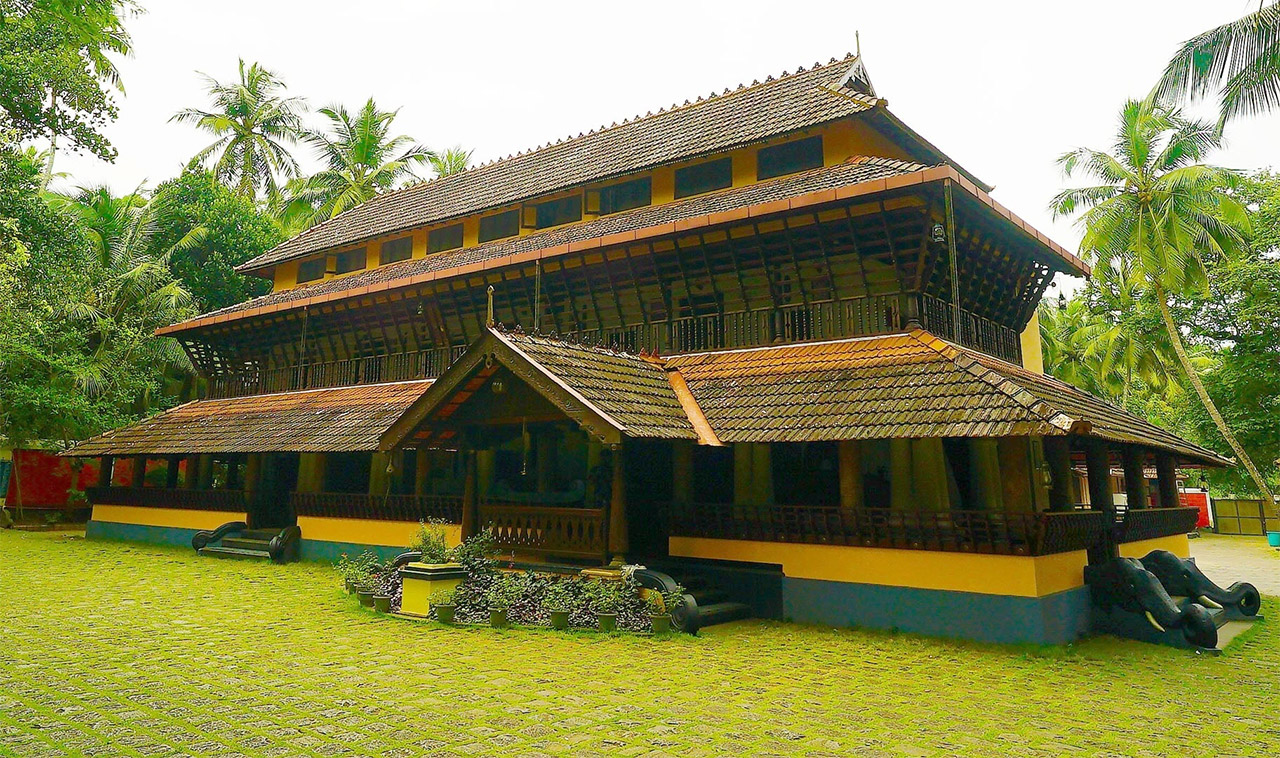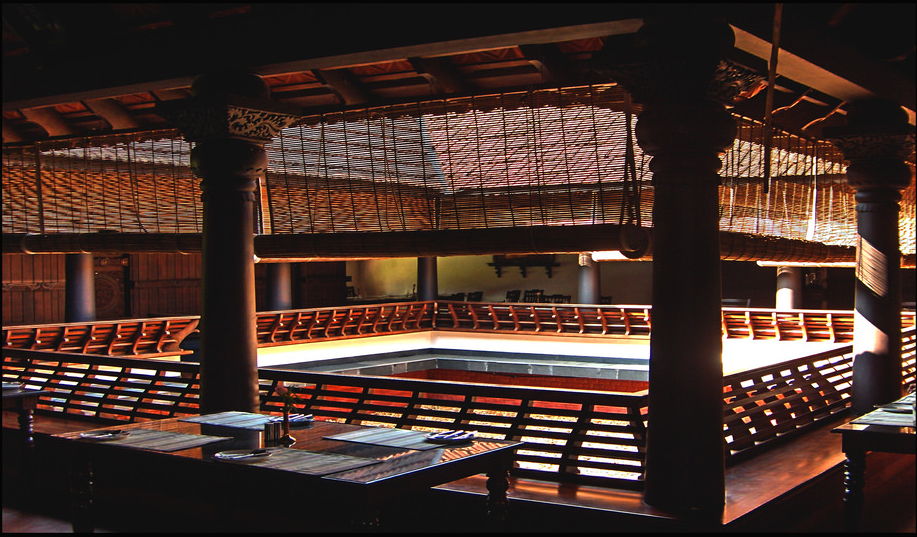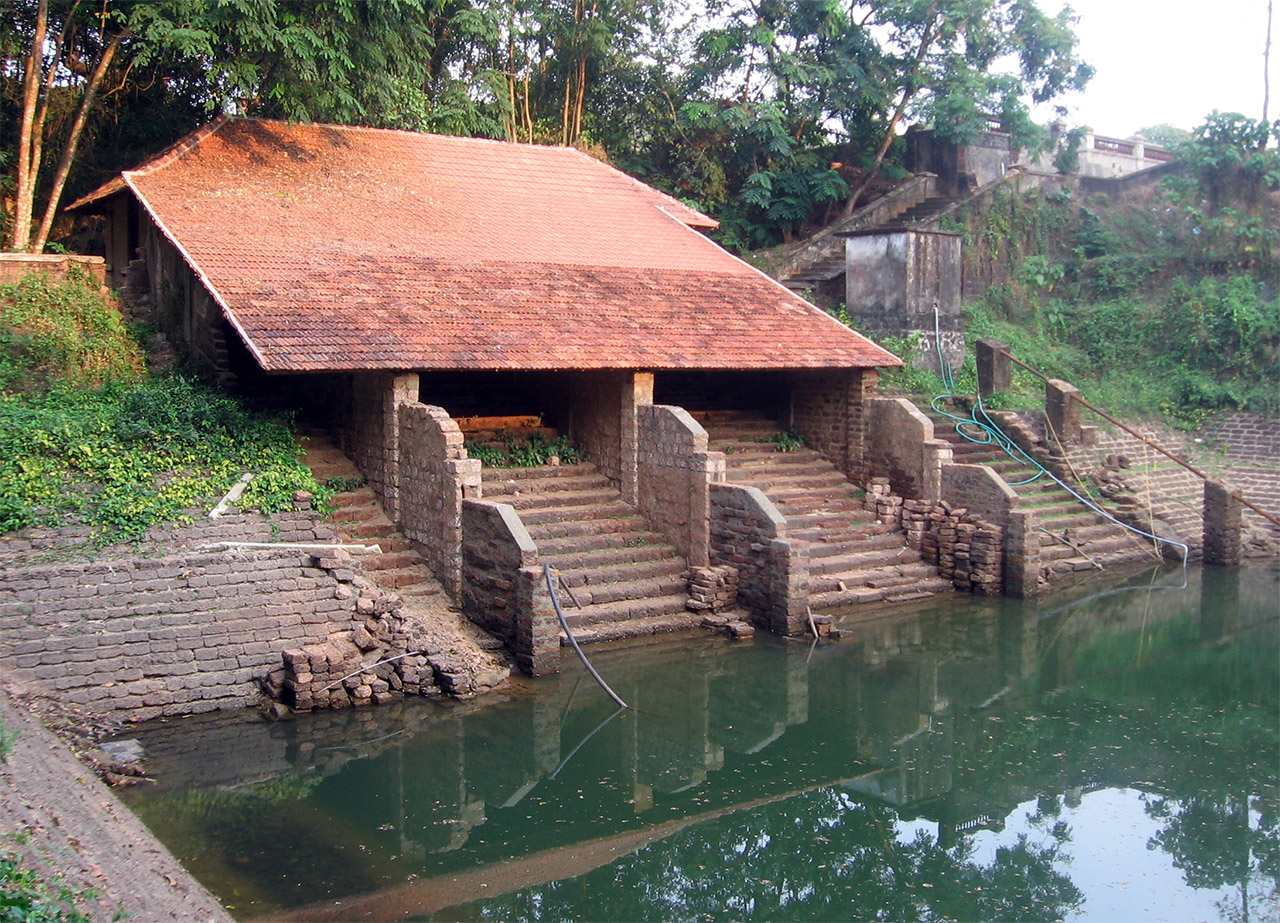
Blessed with abundant greenery and mesmerizing beauty, Kerala is, without a doubt is one of the most beautiful places on earth. From the coconut trees and paddy fields that adorn the state to the magnificent mountains and tranquil backwaters, the land is blessed with enthralling and exhilarating beauty. Hence, it comes as no surprise that the state is known as “God’s own country.” Apart from its scenic beauty, the state is also home to a rich and diverse culture and heritage. The state’s traditions and culture can be observed through the traditional house of Kerala. They are an embodiment of the customs and heritage of the state and hence occupies a significant part in the history and culture of the state.
Nalukettu

The traditional houses of Kerala are known as Naalukettu (“Naalu” means four, and “Kettu” refers to blocks). Typically a Naalukettu house would comprise four blocks. The Vadakkini (the Northern Block), Padinjatini (the Western Block), Kizhakkini (the Eastern Bloc), and the Thekini (the Southern Block). Though however, it can be observed that some wealthy and larger families also build Ettukettu (meaning eight blocks). Even Pathinaaru kettu (meaning sixteen blocks). In Ettukettu, the house would include two central courtyards, and in Pathinaarukettu, the house would consist of four central courtyards.
Tharavad
Usually rectangular, the Naalukettu is constructed large enough to accommodate all the members of the family. In earlier times, joint families were the norm, and the Naalekettu was passed on through generations. A Naalukettu, which has belonged to a particular family for generations, came to be known as the Tharavad of the family. The Tharavad was a source of great prestige and honor for the family which resided in it.

Construction
Usually made of teak wood, Mahagony, sandalwood, and the wood from the jackfruit tree and bricks, the Naalukettu houses had a unique architecture. The house included doors and windows made of wood, verandahs with wooden pillars, Padippura, and the Nadumuttam. These homes had better ventilation and lighting, which allowed the home to be well aerated at all times of the day. Also, owing to the better lighting, the house was always well lit. The architecture of the house is also equally brilliant and majestic. Almost all the Naalukettu houses are built in a unique manner. This enables them to blend in perfectly with their natural surroundings. The people residing in the state are well connected to nature. hence their homes too are designed in such a way that they merge in entirely with the nature that envelops them. Almost all the traditional Naalukettu houses are carefully placed in the center of the courtyard, in the lap of nature.

Astrological Significance
These traditional houses are built based on the Thatchu Shastra or the Vastu Shastra. They are made in such a way that the house faces the east direction, and hence the entrance of the house is also placed in the east direction.
Climatic Endurance
The roofs of these houses are also quite different from that of others and are sure to grab the attention of anyone who visits the state. The roofs are either pitched or sloped and are embellished with incredible tiles. They are built in this unique fashion due to the climatic conditions of the state. Kerala is a land where rainfall is quite common. In this scenario, the sloping roof is more suitable than a flat roof. For the tiles, sometimes clay was used, which provided a cool atmosphere for the house members. In most of these traditional houses, the roof’s color is a unique shade of red.
Padippura and Poomukham

However, in modern houses, a wide range of colors are used. The entrance of the Nalukettu or the traditional Kerala house is known as the Padippura. This entrance comprises a traditionally designed door and a tiled floor, along with a sloped roof, which resembles a temple. After you enter the padippura, one reaches the poomukham. Poomukham refers to the shaded veranda space. The veranda usually is quite spacious and gives a grand appearance to the house.
Charupadi

The charupadi is, in simple words, a built-in wooden seat that is constructed to face the Poomukham. In the olden days, the charupadi was used by the elders of the home to interact with any outsiders who visited them.
Nadumuttam

However, the most distinguishing factor of a traditional house in Kerala is undoubtedly the Nadumuttam, situated at its center.
The Nadumuttam is open to an air courtyard shaped like a square or a rectangle, located in the house’s central part. At the time of rain, members of the house can enjoy it by standing around the floor of the Nadumuttam, inside the house. The Nadumuttam also provides the space for the members of the family to gather together. Apart from just being a meeting place, this place also serves as a place for the family members to celebrate festivals together. These traditional houses even include a pond, which was used exclusively by the members of the family.

Apart from this, the Naalukettu houses also involved a kitchen, veranda, granaries, dining room, bedroom, Pooja room, and a well. The traditional houses of Kerala always seem to be in harmony with their natural surroundings. These traditional Nalukettu houses were usually built in the midst of nature and had planted around its courtyard a wide variety of trees. This shows the amity between people and nature, which is still prevalent in the state.
However, as time passed, the nalukettu, which used to be owned by joint families, slowly became replaced with nuclear families, building modern homes. Modern houses built in the state also share some of their characteristics with the traditional houses of the state. The pitched or sloped roof is an apt example to show the influence of the traditional Nalukettu homes in today’s modern homes. Most of the houses built in the present day would include the pitched roof, but instead of a single shade of red, a wide range of colors are used.

Nowadays, some modern houses also add a small central courtyard (mostly roofed), which signifies the Nadumuttam. It was present in the traditional Naalukettu houses.
The Nalukettu homes were designed elegantly. They accurately reflected the state’s culture, traditions, and rich heritage. As one observes the Naalukettu houses’ construction, one feels enchanted by the architectural brilliance.
These houses were built so that they are well accommodated to the changin seasons throughout the year. Living in these homes, one would never feel distanced from nature but instead would feel that they too were a part of nature. Naalukettu houses thus still occupy a very significant role in the history and culture of Kerala.





